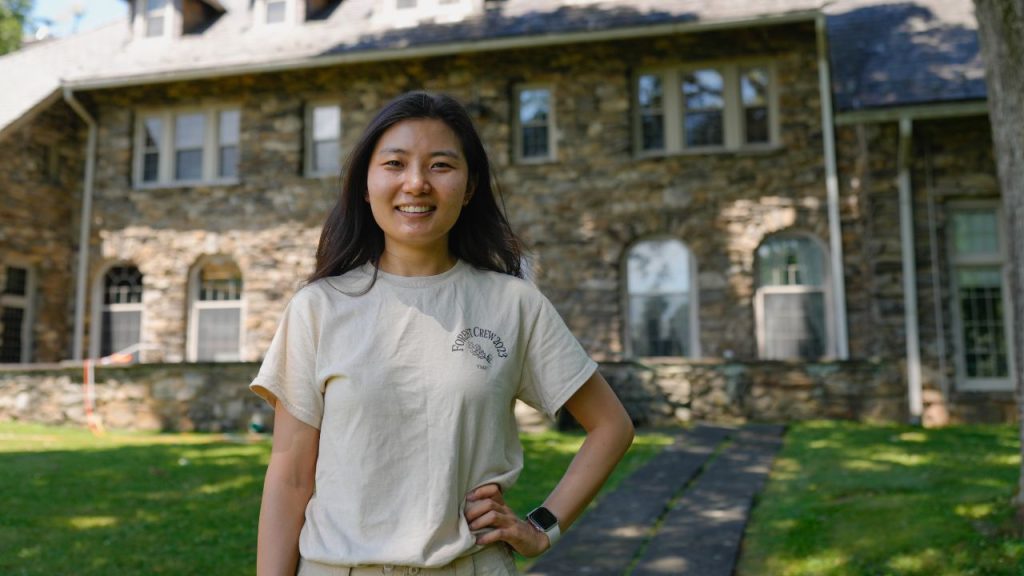For the first time since Fordham acquired the Louis Calder Center in 1967, the biological field station has a dedicated land manager.
The Calder Center is a 113-acre property in Armonk, New York, where Fordham faculty and students conduct ecological research in a relatively undisturbed area of wilderness, just 25 miles north of New York City. Chomri Khayi arrived at the center in February, and ever since she’s been hard at work mentoring students, forging partnerships with local conservation groups, and developing a land management plan for the property.
Before joining Fordham, Khayi worked in land management and conservation at Yale. There, she conducted field research on the ecological recovery of dry tropical forests, developed a plant identification resource for a national park in Ecuador, and helped to manage the health and resilience of over 8,000 acres of forest in Connecticut and New Hampshire.
Khayi sat down with Fordham Now to discuss her new role.
What does a typical workday look like for you?
I usually have volunteers or interns come in. Right now we’re doing an inventory of the forest. We have a brief meeting, gear up, then we head out into the woods.
What does it mean to do an inventory of the forest?
In order to manage a particular woodland, you need to know what’s there in terms of the plants and the wildlife, as well as the stressors in that environment.
We have around 37 plots all across the property, and in each plot, we collect data on the mature trees, the smaller trees, the understory vegetation, and also invasive species. We also check the light availability to see if there’s a big canopy opening.
Then we extrapolate data from those small plots to the whole property to understand species diversity and distribution, and use that knowledge to develop management strategies.
What are some of the challenges related to conservation at Calder?
The biggest challenge ecologically is the non-native invasive species.
Not all non-native species are invasive, but the ones that are can get really aggressive, and they can out-compete the native plants since they don’t have natural predators.
You can’t eradicate all non-native species, and some of them have benefits, but the challenge is managing them. And that’s difficult, considering we’re about 25 miles away from New York City, a big hub of international trade. We have a lot of things coming into the ports, outdoor recreationists that may inadvertently aid seed dispersal, and residential areas where they may bring in seeds and ornamentals (decorative garden plants) that may prove to be aggressive.
What impact will your work have beyond the Calder Center?
We’re part of several regional partnerships, like PRISM, EMMA, the New York Botanical Garden, Vassar College, and others. We’re not just looking at our own land. We’re collaborating with other sites in the lower Hudson Valley to exchange knowledge and create a network for early detection and monitoring.
Calder also creates a good opportunity for students to try out different interests and see what they like, or simply provides a green space for students to enjoy. If they really commit and spend a summer or a year at Calder, they would have a very unique, boots-on-the-ground experience. In this role, I really want to continue building this community of students that nurtures their relationships with natural areas and with each other.
This interview has been edited and condensed for clarity.


